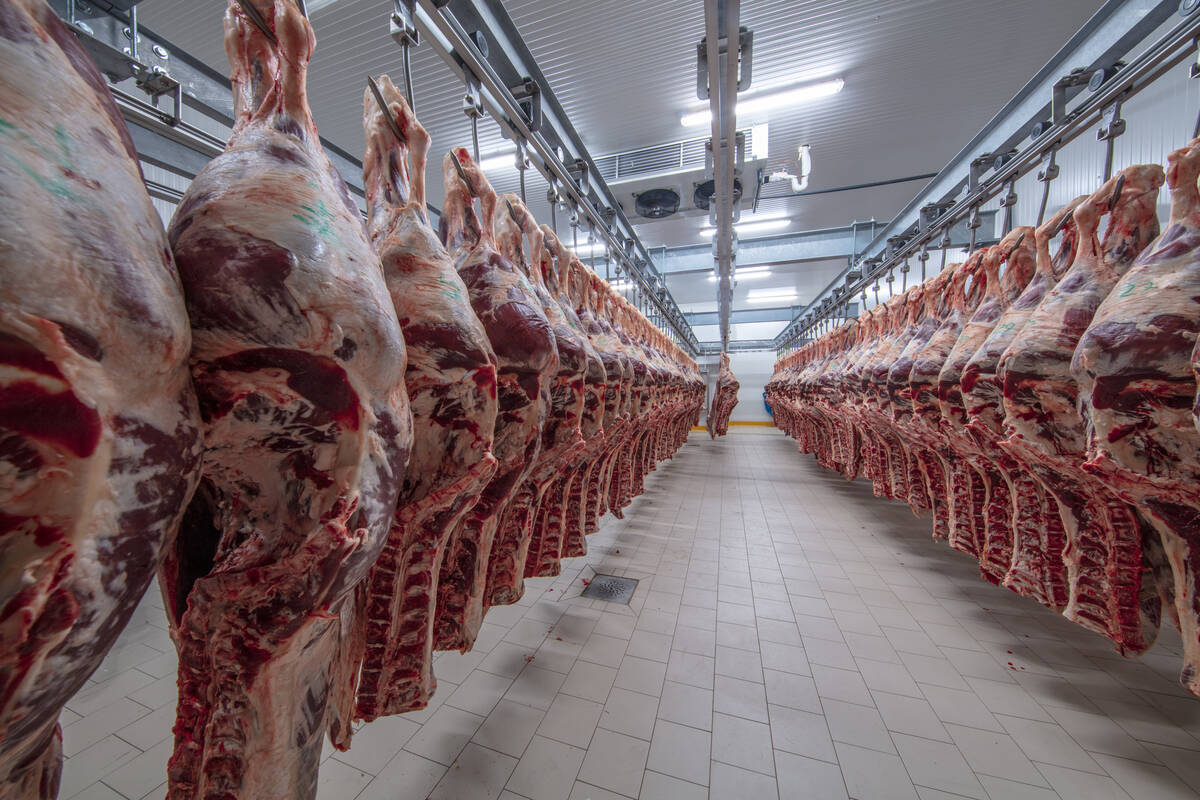A new company — a partnership between the Canadian Cattlemen’s Association (CCA) and livestock technology company ViewTrak — plans to bring the newborn unsteadiness of an information exchange network to a full gallop for all Canadian livestock sectors.
The as-yet unnamed private company was formed to bring the CCA’s beef information exchange system, BIXS, to all players in the livestock industry.
While BIXS over the past four years has developed the system and technology to track cattle through all stages of the Canadian pasture-to-packer beef production system, it essentially stood only at the threshold of being able to engage the entire industry. And the CCA didn’t really have the resources, tools or mandate to take it much further.
Read Also

U.S. livestock: Hogs, cattle fall
Chicago Mercantile Exchange livestock futures fell across the board on Wednesday. Most-active February live cattle futures closed at 229.550 cents…
The new company, with the working title of BIXSCO, is expected to carry BIXS to the next level of operation, say principals for both the CCA and Edmonton-based ViewTrak.
Their proposal, they said, is to say “We have the technology, here are the benefits of exchanging animal production and beef quality information back and forth through the supply and retail chain; let’s all start using it to better carry Canadian beef to the domestic and international marketplace.”
Hubert Lau, an official with ViewTrak who will serve as CEO of the new company, on Monday described the objective of this new initiative.
Rather than each sector of the industry — beef producers, cattle feeders, meat packers, auction marts, retailers, food service companies — working independently and sometimes at cross purposes, the objective of BIXSCO is to help “circle the wagons”, he said.
“It is to connect the Canadian beef industry so there is a back-and-forth flow of beef production and quality information between all players.”
He described the system as “collaborative economics.” It doesn’t spoil anyone’s independence or competitive advantage, but does get the entire industry singing from the same song sheet.
“It is much like what we saw with industry in Japan,” said Lau. After the Second World War, he said, “Japan emerged as a country with industries that produced some of the most reliable cars and electronics in the world — Japanese products had a good reputation.
“The fact is that the various Japanese automakers are fiercely competitive. But they recognized the advantage to the whole industry of working together to promote ‘Japanese quality’ to the whole world. The executives of these companies meet to discuss strategy for marketing Japanese products. It doesn’t take anything away from the individual automakers, but it does benefit the industry as a whole.”
The plan for BIXSCO, he said, is “to engage the whole Canadian beef supply chain on the value of collaborative economics.”
Rob McNabb, the CCA’s general manager, said the new company — the first company developed through a CCA partnership — comes at the ideal time.
“When we first began developing the concept of BIXS about four years ago, the plan from the outset was to get a system or service up and running and then be able to hand it over to some other agency or company to operate,” he said.
“The plan all along was for BIXS to become a self-supporting and sustainable program available to the Canadian beef industry.”
The initial funding to develop BIXS was covered by the federal Agricultural Flexibility Fund, and more recently by funds from the Canadian Beef and Cattle Market Development Fund or “Legacy Fund.”
While many details on BIXS operation are yet to be finalized, any further funding of BIXS will be backed by ViewTrak.
What does BIXS do?
As the name suggests, BIXS is a beef information xchange system. It is all voluntary, but the concept is for each cow-calf producer in Canada to go to the BIXS website to register their cattle — marketable cattle — on the BIXS software program, using the individual CCIA ear tag numbers.
The producer is asked to provide a basic amount of information — date of birth, sex and breed of each animal. Then comes a wide range of optional information concerning production practices.
Once those market cattle are registered, they can then be traced through the whole production system, to feedlots registered on BIXS, through to the packers.
BIXS is a two-way information exchange, in that it can send information back through the network to producers, providing reports on how cattle fed at the feedlot, as well as reports on carcass grade and yield at the packing plant.
Since it was launched, BIXS has recorded 3.4 million animal birthdates into its system, and collected three million detailed carcass records. It is the largest database of its kind in the world.
On the other end of the system, feeders, packing plants, retailers and foodservice companies can come to BIXS looking for cattle produced with specific production specifications, and can send information back through the supply chain to find producers who have cattle meeting these requirements or who may be interested in producing them.
Again, BIXS is all voluntary and all confidential — no one is able to identify individual producers or other players in the supply chain unless that person or company agrees to be contacted.
This “search” through the Canadian beef industry for cattle produced with certain specifications is becoming more important and relevant as food retailers and food service companies tailor their marketing efforts around meat products that are natural, organic, hormone-free, sustainable and/or produced humanely, among other aspects.
That’s where BIXSCO is expected to fit in, as it unites or “circles the wagons” to complete the information flow through the industry.
“Real-life examples”
Larry Thomas, national co-ordinator of BIXS since day 1, has been tasked with working with software developers and all sectors of the industry on a user-friendly system, easily accessible for people to input data and retrieve information.
Thomas has worked extensively to promote BIXS across the beef industry. Upon review and further testing of the software as it was launched in 2011, BIXS was completely overhauled last year, and BIXS 2 just recently launched.
As this partnership announcement is made, Lau said the new company plans to hit the ground running. A formal name will be finalized, and there will be extensive consultation with the industry on its needs and concerns.
“It is important that we not only talk about the potential benefits of BIXS through the beef supply chain,” said Lau. “But we also have to begin demonstrating the benefits so people can see real-life examples of how it works.”
— Lee Hart is editor of Cattleman’s Corner in Grainews, based in Calgary. Contact him at 403-592-1964 or by email.















